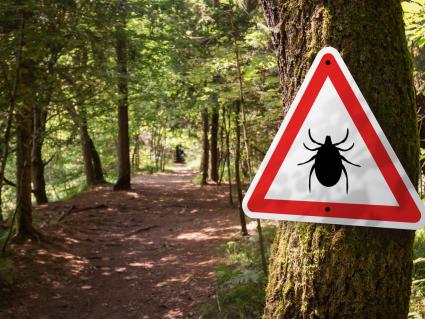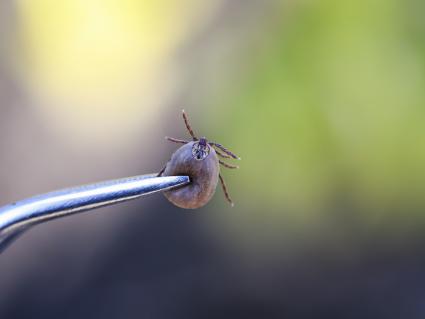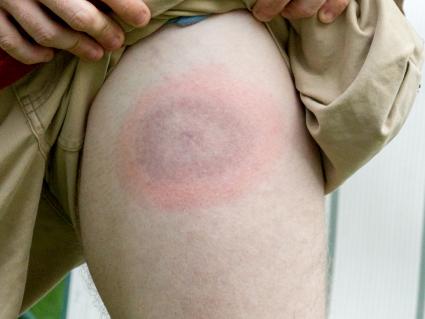Gastrointestinal Health
Lyme Testing: What to Know.

Did you know that the traditional Western Blot test for Lyme disease is not adequate testing to detect all Borrelia groups and species? Most of us are aware of “co-infections”, such as Babesia, Anaplasma, Bartonella, etc., however, other Borrelia groups and species are often overlooked when it comes to testing. Igenex, a laboratory that has a focus on developing high quality testing for Tick Borne Illnesses, recently discontinued their Western Blot to be replaced with the Lyme Immunoblot. The Lyme Immunoblot is more sensitive and specific than the traditional Western Blot, which only tests for one species of Borrelia, B. burgdorferi. In one test, the Lyme Immunoblot will assess for nearly ten species of Borrelia; including B. burgdorferi B31, B. burgdorferi 297, B. californiensis, B. mayonii, B.afzelii, B. garinii, B. spielmanii, B. bissettii, and B. valaisianaa.
Read MoreLyme Disease in Children

Lyme Disease in children can be elusive, often dismissed and/or undertreated. As adults it is easy for most to identify and relate symptoms that we may be feeling, however as a child, it can be difficult to put symptoms into words or even voice that something may be wrong. It is important to keep Lyme Disease as a differential diagnosis when a child may have vague complaints or a parent or caregiver notices changes in a child’s behavior. Children with Lyme Disease may exhibit exhibit headache, irritability, fever, unilateral limb pain or joint pain, fatigue, lack of motivation or change in behavior, facial palsy, rash/erythema migranes, lymphadenopathy, myalgia, carditis and aseptic meningitis. These symptoms are all seen fairly “early” in disease manifestation, within a few weeks to months.
Read MoreTick Borne Infection and Mental Health

I recently had a patient contact our office with a complaint of a multi-year history of anxiety that started several months after a camping trip. Despite trying many different medications and counseling therapies, their anxiety has been resistant to all attempts at treatment. In addition to the anxiety, the patient had also developed a distinctive “stretch mark like” rash, but the patient did not have risk factors for stretch marks. This case has the hallmarks for a vector borne infection that we lump into the category of Lyme and associated diseases, called Bartonella (also known as Cat Scratch Fever). Neuropsychiatric symptoms (mental illness) have been well documented in the scientific literature in patients with Bartonella positive testing.
Read MoreUsing Herbs to Support Lyme Disease Therapies

According to the NY State Department of health, active tick season starts in March for adult ticks and May for nymph ticks. With a milder winter this year, it is likely that some have already had encounters with ticks. Both adult and nymph ticks can carry multiple infections referred to as tick borne Illness. These illnesses include Lyme disease caused by the bacteria borrelia burgdorgeri, anaplasmosis, babesiosis, and others. The treatment for Lyme disease is antibiotic therapy such as doxycycline or cefuroxime and is often adequate if caught early. However, caught in late stages, it can be more difficult to treat. Different types of antibiotics and herbs have been studied to find the most effective agent that can kill or eradicate all forms of the bacteria. In subculture studies, single antibiotic therapies are often found to be ineffective at complete eradication. However, there are herbs that have been studied and tested in vitro that have been found to be effective in eradicating all forms of borrelia bacteria.
Read MoreWhat are the Best Foods to Eat While Treating Lyme or Coinfections?

When treating anything from infections to mold, supporting detoxification is a crucial component of healing. Whether the treatment involves antibiotics or herbal therapies, there is a chaotic symphony of cells, bacteria, and toxins being destroyed and reorganized. As these things travel through the body, we can often feel more symptomatic while fragments build up in the bloodstream. Getting them out of the body by way of detoxification is what helps us to feel better.
So how do we do that?
Read MoreAnalysis of Lyme: Attachment, Transmission, Stages, Challenges, and Treatment

In this analysis of the current literature and research on Lyme and tick borne illnesses by Dr. Ronald Stram and medical assistant, Ahn Vo. Starting with an overview of its history; tick attachment time and rate of transmission; stages of infection and related symptoms; challenges in Lyme and testing; and antibiotics versus combination therapy. This throughout analysis contains a wealth of information for those who want to expand their knowledge about Lyme and it's complexity.
Read MoreMyth: A tick head needs to be removed completely if broken off in or under the skin.

According to the American Academy of Pediatrics 2020 and the Tick Bite, Schmitt Pediatric Guidelines 2020, it is recommended NOT to dig out the head of a tick if the tick breaks upon removal. It is felt that more trauma to the surrounding skin can lead to a higher risk of infection or cellulitis of the area. Leaving the tick head in does not increase the risk of contracting a tick borne illness. The body will shed skin layers and the tick debris as it heals
Read MoreRemaining Vigilant while Transitioning Gracefully from Fall into Winter

One myth or misconception is that ticks are not present during the winter. After seeing so many ticks in late spring into early summer and then again, but maybe less so, at the beginning of the fall, we must still remain vigilant all year round. According to the SUNY Upstate Medical University website, “ticks don’t die in the winter, they go into dormancy around 35 degrees and hide in perfectly formed igloos under leaf litter. As soon as the frozen ground thaws and the ground temperature reaches 45 degrees, ticks will begin to emerge in seek of a host for blood feeding. And if the weather gets bad again, they seek shelter, but they don’t disappear.”
Read MoreMyth: Bullseye Rash is Always Present in Lyme Disease

Many people believe that the bullseye rash, also known as erythema migrans (EM), is necessary for a Lyme disease diagnosis. While a bullseye rash is indeed clinically diagnostic, its absence cannot rule out either acute or chronic Lyme disease. However, a non-bullseye rash is more common...
Read MoreA Note of Gratitude

As we let go of 2023, with its shortcomings, pain, beauty, and resilience, we move forward to this new year. I will always encourage my clients to reflect and explore their year, progress, pain, and gratitude. I too encourage myself to do the same. My gratitude for my work, my clients, their willingness to be open, and my bearing witness to their pain, makes me ponder and reflect on how rare it is to do my job and only my job
Read More




















